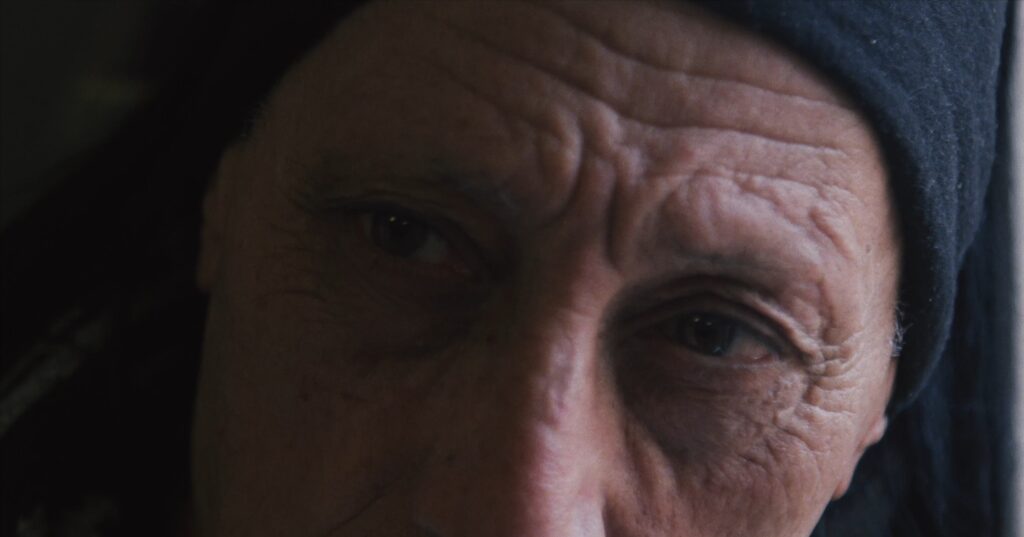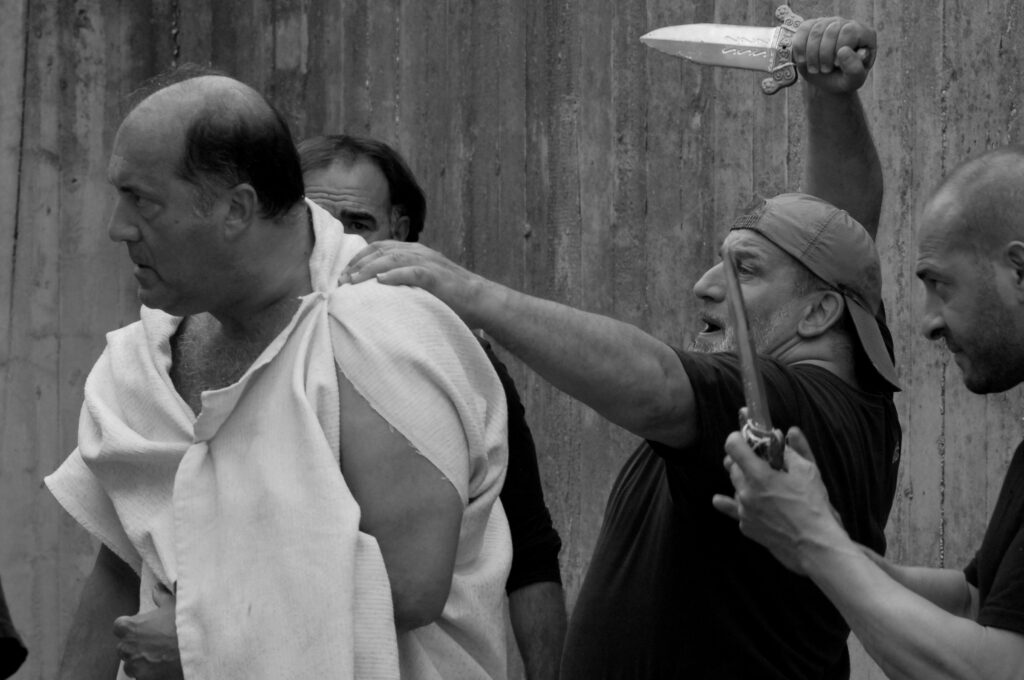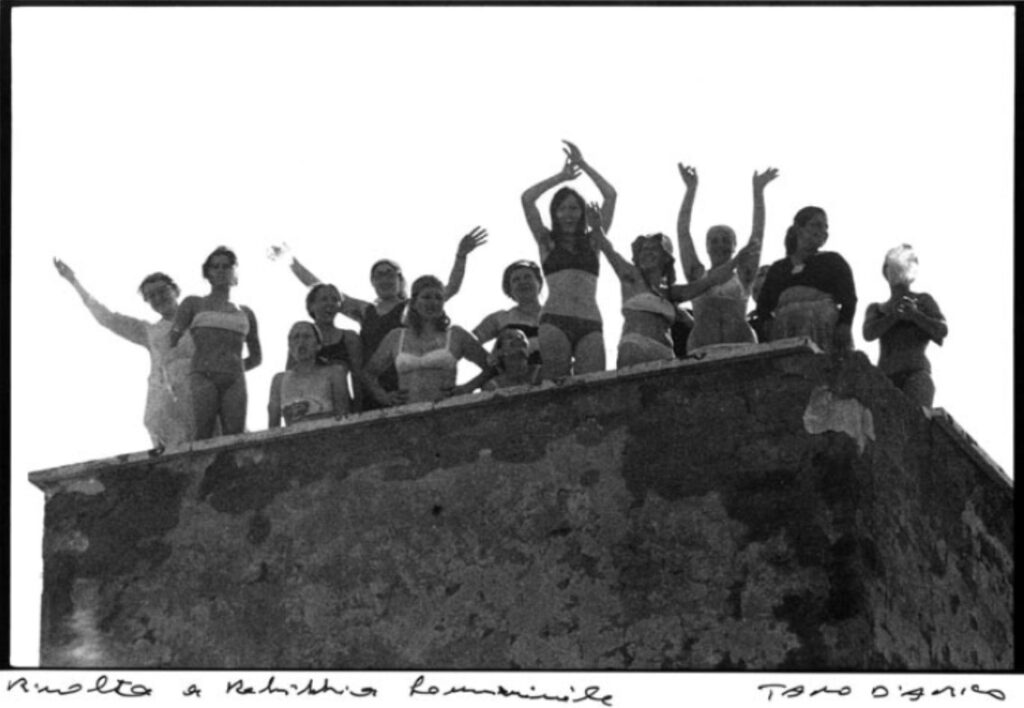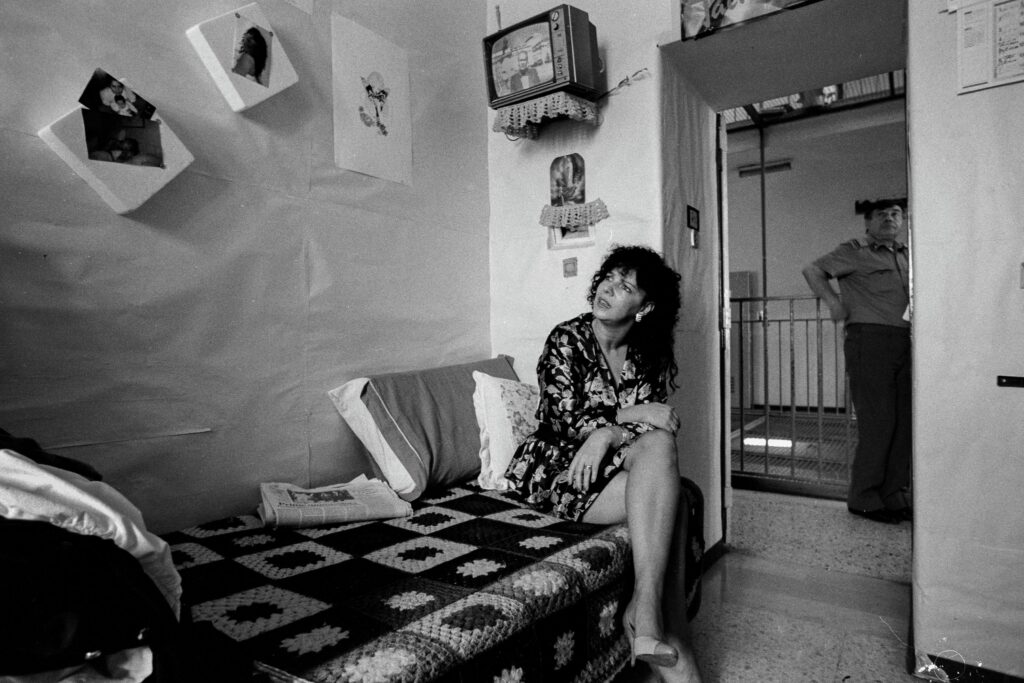A Kitchen and its Fire

To speak authoritatively about tradition, you need to have tasted it deeply, especially when it comes to cult foods like Roman-style pizza. That’s why it seems just fitting to turn to Jacopo Mercuro, the pizzaiolo behind the acclaimed 180 Grammi, to dive into the world of traditional pizzerias that have shaped Testaccio’s culinary backbone. Jacopo, besides being the mastermind behind a modern renaissance of Roman pizza, is also a loyal regular of the historic establishments still active across Rome. His first location, in fact, was right at the edges separating Via Ostiense from Testaccio, strengthening a deep and longstanding connection to the area: «I opened my first place nearby because there’s always been an umbilical cord connecting me to this part of the city», he says. «It’s an area that feels like home, not only because I attended a nearby university but also because I was a die-hard fan of its many pizzerias. Pizza, for me as a kid, was just that one… nothing else. Remo and Il Grottino raised us with their dough. Any daily event was celebrated in a pizzeria, which is why Roman-style pizza has always been the equivalent of celebrations».
Born in 1988, Jacopo made a bold, even “crazy,” life change while he was working successfully in a law firm, after studying law. «I started cooking pizza in the baking tray because it was the only kind I could make at home. For me, it was a way to de-stress from a job I didn’t really like. Before I even knew it, I became obsessed. So much so that my mother gave me a gift: an amateur course with Bonci. When I began comparing his figure to that of Totti’s, I realized this wasn’t just a little hobby anymore, but it was becoming something bigger. His course was my baptism. Sensing my passion, Bonci asked me at the end of the course if I owned a pizzeria. And so, thanks to reckless impulse and zero entrepreneurial experience, I opened Mani in Pasta just six months later. I quit my job and went “all in” with the savings I had. The only other formal training I had was a course from API (Associazione Pizzerie Italiane) with Angelo Iezzi. Everything else I learned on the job, with increasing stress and tough setbacks. Back then, pizza wasn’t the hyped-up food it is today».
Jacopo’s determination paid off when Coquis (a school offering advanced training) offered him a teaching position. «This educational side fascinated me so much that I decided to sell Mani in Pasta and focus only on teaching for a while». The nostalgia for service, for the satisfying faces of customers, however, was just around the corner. Thus, the family's deep-rooted attachment to the Roman pizza resurfaced as a solution and the basis of a new revolutionary project: «When I was dabbling in baking at home between one course and another, I realised that the experiments on the tonda romana (round Roman-style pizza) were always the ones that left a mark. Perhaps because of its ability to bring everyone back to their roots. The rise of Neapolitan-style pizzerias or the more modern tray-baked pizzas had somewhat swept away this ancient culture, but I never forgot that in our DNA there is that pizza: thin and very crunchy. I realised that there was a slice of the market that was completely untapped: that of the Roman pizzeria reinterpreted with a forward-looking vision. Hence, the desire to open a place that would tell my identity, reclaiming what truly belonged to me. With my former business partner Mirko Rizzo, we went back on a food reconnaissance tour of all the historical places that represented that kind of pizza at its finest, and obviously Remo was among the great masters. We thought it was possible to take a leap forward in that imagery, without changing its essence. Our bet was to bring the technical experience of the tray-baked pizza back to the classic Roman pizza. A product that would be obviously good, but also with a different consistency, beautiful to look at, based on quality raw material. Opening the first 180 Grammi was a unique market case because we were sold out from day one in a ghost area like Centocelle, without ever really carrying out a communication plan. We were the only ones to offer this kind of experience at that time and people responded with huge enthusiasm, as if they felt the same need. We brought attention back to something that had always been there and had always retained its value. That’s why I still compare my brand to a sneaker icon like the Air Max from the 1980s: it was enough to give it new light and colour to make everyone realising its immortality.



In a few years, Jacopo’s brand exploded across Rome, leading him first open a research-focused flagship pizzeria, together with two take-out only locations, all defined by a surgical level of product refinement. «The key was listening to the customer’s needs, creating a product that I would eat every day. I focused on perfecting the various stages of fermentation, leavening, baking and topping very meticulously. It was important to ask myself new questions, because the methods of old-school pizza makers have always been handed down as the only way and was often dictated by practical constraints like space and timing to be managed. We wanted our dough-stretching technique to become a signature: hand-stretched, with “bubbles” on the edges, iconic like an imprint. Another key aspect was the baking process. There are various types of crisp and we were looking for something that wasn't dry but looked flaky, layered: it was important to use a high-temperatures oven that allowed us to start with a strong burst of heat. Another factor was a pre-ferment dough with spelt and weak flours, much more hydrated than traditional recipes. All this was not about disrespecting historic pizzerias. Their use of the rolling pin and their traditional technique is still impeccable for that style of pizza, and I go eat there at least twice a week».
We believe him blindly because as soon as he walks in Remo’s, the whole staff greets Jacopo as if he were a member of the crew. «Whenever I come here and order the pizza I used to eat as a child – hot dog and fries - the guys from the staff make fun of me, as they are the first ones to come visit me at 180 Grammi, appreciating the careful research we do on the toppings», Jacopo chuckles. «Despite being of the quirkiest combination ever, it's still my favourite since when I was eight. Eating it here is a priceless matter of the heart».
Pizzeria Da Remo in Testaccio is a sort of sacred temple, one that leaves you stunned for the level of genuine and unapologetic Roman authenticity radiating from it. A (hyper)active place for almost fifty years, led to glory by his history owner Remo Stecconi and veteran (still working here) Tonino Amato. We immediately meet one the most seasoned pizzaioli, Alessandro Santagà, as he preps the dough balls at 5pm for the evening service. It is impressive to see him playing around, with only two helpers behind him, at the tiny marble counter facing the mouth of the everlasting wood-burning oven: «I have been working here for twenty years, but I started by making bruschetta», he says while stretching the dough for the first pizzas of the evening, «this pizzeria reflects me for its unchanged authenticity and also for the family approach that always rewards you, if you know how to keep up with it. We work really hard and there are only three of us in the pizza section, alternating between those who stretch out the dough, do the toppings, bake and serve, all at a fast pace. We count an average of two hundred dough balls a day, and even more on weekends. But when we knock off at 1 a. m. it never feels like a burden. The flavours we preserve here speak Testaccio’s true dialect. I can say that because I was born here, and I would never work anywhere else».
His gait and speech make him an integral part of the place, as he wanders around with three pairs of glasses on his head to catch possible nuisances from various distances, and three watches on his wrist, synchronized according to his logic to the districts of Trastevere, Garbatella and Testaccio.
While we cast a hungry eye over the paper menu, where you have to tick off your choices as if filling a Totocalcio (football pools) slip, our gaze is caught by a character who embodies the very essence of Remo. A pillar among the tables: Pasquale aka «Roccia» (the Rock). «When I was thirteen my father dropped me off here, and I started cleaning toilets and then became a dishwasher» he recalls, folding napkins with quick, automated movements. Little by little, I began helping out and, thanks to Raimondo Mameli, the old head in the kitchen, they taught me how to make supplì, sautéed chicory and other recipes that served as the foundation of my training. I was just a kid and worked on top of crates of soda bottles because couldn’t even reach the counter. I’ve been here since 1986 and I’ve never worked anywhere else, always wearing my uniform as it was my Lazio jersey. I had the privilege of learning from of the historical founders and the legendary pizza masters who were here in the early days, including Remo, Peppe De Vessio at the oven, Usai Libero in the dining room and Raimondo at the stoves. They were the ones who gave me a trial run, like you would do with a soccer player and promoted me from the bench to the oven, making me a top scorer. I don’t mean to brag, but I was a champion at the time. I learnt by stealing with my eyes, along with some slaps on the wrist and scoldings».

Pasquale’s appearance alone would suffice as a proof of attitude: straightforward and totally in tune with the integrity of the pizzeria. His gait and speech make him an integral part of the place, as he wanders around with three pairs of glasses on his head to catch possible nuisances from various distances, and three watches on his wrist, synchronized according to his logic to the districts of Trastevere, Garbatella and Testaccio: «Some people keep track of the time in London, Tokyo and New York. I’m always here, but I travel with my mind while standing still. In the golden days, when I worked at the oven, I used to make fifty kilos of flour by hand because the kneading machine has never set foot here, not even today. The dough changes every day: you need to evaluate humidity, water temperature of the water, and even the air outside. I’d step out of the pizzeria, raise my arms to the sky to feel the weather, then go back inside and figure out where to cut the yeast. A professional needs to calculate every variable, even when choosing the right wood. I’d used the twigs as light bulbs to light up the oven and better control the pizzas, medium-sized logs to keep the main flame alive, while I set aside the big chunks for peak hours. On weekends, I would leave with at least three hundred balls of dough, ready for the “battle”. Every night, I’d file my pizza paddle and adjust the oven temperature, never below 350 degrees. When I saw the white cloud, I knew it was ready. If the temperature got too high, I’d spray a little water to get it back on track. I only used a narrow-handled paddle: you can tell a good pizza maker by that. The longer the handle, the less skilled the pizza maker; the shorter it is, the more he knows how to do his jobs. The oven is deep, and you have to know how to throw in pizzas while braving the heat. I used to throw in about fourteen pizzas at a time, like playing bocce. I was like a sniper, as fast as a racing car. I would put on weighted shoes on Monday, Tuesday and Wednesday to strengthen my legs; then I’d switch to lighter ones from Thursday to Saturday. I didn't even touch the platform with my feet, I was flying over it like a high-speed train! I miss that adrenaline sometimes, but I always keep my apron in my pocket to give the new pizza makers a hand when needed. This place is unique: the work is hard, but there’s always time for a lot of laughs. Now that I’m working the floor, I’m in charge of making the customers laugh, keeping Remo’s flag flying high».
Theory gives way to practice, as we devour a gargantuan feast of supplis, cod fillets and batter-fried zucchini flowers; and amazing mozzarella and anchovy crostini drizzled with thundering melted butter. Jacopo’s enraptured tasting offers the cue for other remarks: «Every dish I try here serves as a reference for popular gastronomic culture, I can reinterpret it at 180 Grammi. We reinterpret the crostino with anchovies on a crunchy focaccia-like base with a flavoured butter that pays tribute to it. As for the fried foods, we have taken the opposite approach, dispelling the myth that all fried food is inherently good. We have our own research (a very crazy one) on breading, that has its roots in what I have tasted here or from other great performers, such as Giancarlo Casa from the restaurant La Gatta Mangiona or Stefano Callegari of the nearby Trapizzino. We currently start by making bread ourselves, then we dry it, toast, grind and sifting it in an endless assembly line managed by three permanent staff members who do just that. Our pasta-based fried creations have become so iconic that our Sampietrino di tonnarelli has earned its own trademark. Sure, our current menu thrives on culinary contaminations from all over the world, but the staples are the historical recipes from places like this. We bring them back into play, reworking and rethinking them with due respect»



Pizzas are served, releasing ancient aromas and textures; and, after the first bites are a haunting evocative goodness. Pizza Napoli; Capricciosa and with fresh porcini mushrooms as a seasonal special. One leads to another, and all exhibit that thin, musically crunchy crust. But the attention of our undercover pizzaiolo, however, is all on the legendary pizza “Zozza”, born right here: «Even with a thousand experiments I could never make it this good», he says, contemplating the slice, «This is the pizza queen for those working the oven, often used as a test to check the heat. Lightly flavoured with tomato, so garlicky and oily that it seems there is lard in the dough, given the flaky texture it gives in the bite. The crumbly and stringy texture at the same time, immediately teleport me back to all the evenings I’ve spent here with groups of friends. Evenings when there were so many of us, and while everyone was waiting for their order, those phenomenal waiters would throw this pizza, already sliced, right at the middle of the table. I only eat it here and it remains unbeatable in its essence».
Everything here at Remo’s appears cohesive and immutable and talks about a Rome that has never sold itself to trends nor it has surrendered to the passing of time.
The slicing of the classic Roman calzone – oozing a heavenly harmony of egg, ham and mozzarella, harmonised – leads to a collective sensory triumph among diners. Even the “harmless” ricotta-and-sour-cherry cake guarantees unexpected peaks of pleasure when coming out of that miraculous wood-fire oven. Flavours, atmosphere, the movements of the staff and even the faces of customers: everything here at Remo’s appears cohesive and immutable and talks about a Rome that has never sold itself to trends nor it has surrendered to the passing of time.
Unfazed by this tasting marathon, we close this crunchy introspective tour at another historic address: Il Grottino, a pizzeria active since 1936 and run since the 1970s with a watchful care by a close-knit family duo of father and son, always in the front lines. The tiny open counter, where the pizzaioli stretch and dress dough at the mouth of the oven, emphasises the skill level of the craftmanship in places like this. Wielding the last extra-crispy slices of a red pizza with stracciatella and Roman-style puntarelle, Jacopo elaborates one last remark:
«There is an excessive imitation of fine dining that is depersonalising our sector. There are countless middle grounds between places like Remo, Il Grottino and other places with a different focus on service and product. The pizzeria, however, must maintain its own popular and accessible identity, breaking away from recent exercises in style, which are too self-referential in some cases. At 180 Grammi we are working toward simplification, because our initial tendency was unconsciously to surprise the customer no matter what. I no longer want every dish served to be described as if it was the splitting of the atom. We are also responsible for preserving the simplicity of eating pizza, without the anxieties or expectations of entering a university, where pizza chefs turn into prudish teachers. Pizza is the simplest and most precious thing in the world, and yet we are complicating it to such an extent that we risk damaging the way it is perceived. Fact is, I come here to Testaccio whenever I can to rediscover the beauty of eating, reclaiming the original meaning of this simple action. Returning to these places is essential to ground what you have experienced and make it stronger over time. And places like these never fail to remind us of that».







